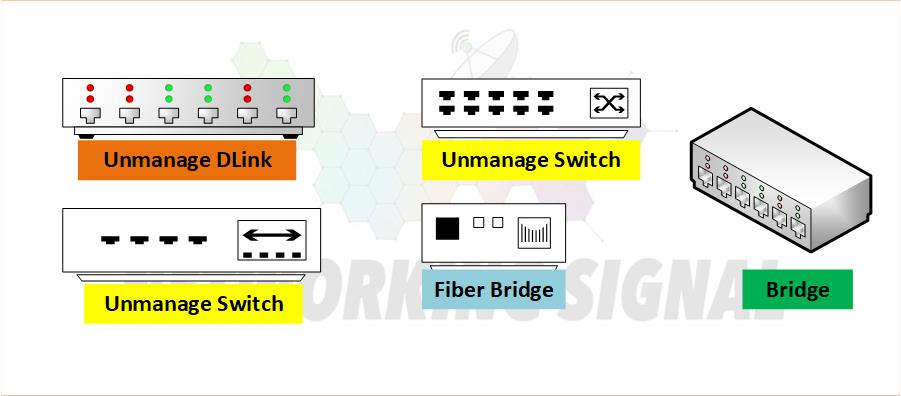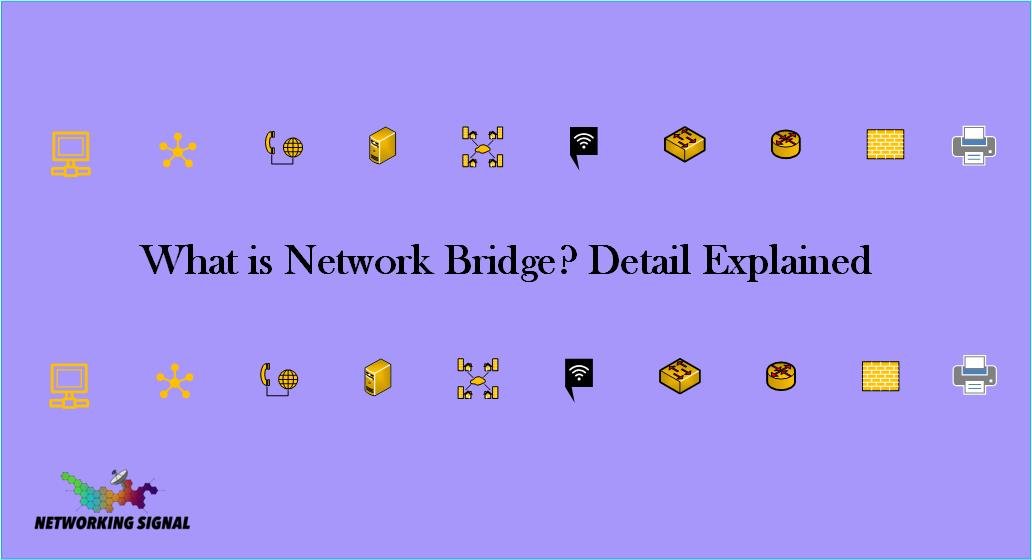What is Network Bridge?
A network bridge is a device that connects two or more computer networks together. Bridges can connect networks that use the same protocol, such as Ethernet, or they can connect networks that use different protocols, such as an Ethernet network and a token-ring network.
Most bridges work at Layer 2 (data link layer) of the OSI model, which means that they examine the source and destination MAC addresses of each frame that passes through the bridge.
If the bridge determines that a particular frame should be forwarded to the other network, it forwards the frame and if the bridge determines that a particular frame should not be forwarded, it discards the frame.
Some bridges can also work at Layer 3 (network layer) of the OSI model, which means that they examine the source and destination IP addresses of each packet that passes through the bridge. These types of bridges are known as Layer 3 switches or multilayer switches.

Types of Network Bridge Devices
There are three main types of network bridges:
- Local area network (LAN) bridges
- Wireless LAN bridges
- Wide area network (WAN) bridges
Local Area Network Bridges
A LAN bridge is a device that connects two or more local area networks together. The most common type of LAN bridge is an Ethernet bridge, which connects two or more Ethernet networks together.
Wireless LAN Bridges
A wireless LAN bridge is a device that connects a wired LAN to a wireless LAN. Wireless LAN bridges can be used to connect two or more wired LANs together wirelessly, or they can be used to connect a single wired LAN to a wireless LAN.
Wide Area Network Bridges
A WAN bridge is a device that connects two or more wide-area networks together. WAN bridges are typically used to connect two or more LANs together over a wide area such as a city, state, country, or continent. The most common type of WAN bridge is an Ethernet bridge, which connects two or more Ethernet networks together.
Uses of Network Bridge with Example
Bridges are commonly used to connect local area networks (LANs) that are using the same protocol so that the devices on each LAN can communicate with each other.
- For example, a bridge can be used to connect two Ethernet networks.
Bridges can also be used to connect different types of networks together.
- For example, a bridge can be used to connect an Ethernet network and a token-ring network. In this case, the bridge would need to be able to understand both the Ethernet and token-ring protocols.
Bridges can also be used to connect two or more LANs that are using different protocols.
- For example, a bridge could be used to connect a LAN that uses the Ethernet protocol with a LAN that uses the token-ring protocol. In this case, the bridge would need to be able to understand both the Ethernet and token-ring protocols.
Bridges can also be used to extend the range of a network.
- For example, if two LANs are located in different buildings, a bridge could be used to connect the two LANs so that the devices on each LAN can communicate with each other.
Bridges can also be used to connect two or more WANs.
- For example, a bridge could be used to connect a T1 line and a DSL line. In this case, the bridge would need to be able to understand both the T1 and DSL protocols.
Bridges can also be used to connect two or more remote networks.
- For example, a bridge could be used to connect a LAN in New York with a LAN in London. In this case, the bridge would need to be able to understand both the Ethernet and token-ring protocols.
Bridges can also be used to create a virtual private network (VPN). A VPN is a private network that uses a public network, such as the Internet, to connect remote sites or users together. A bridge can be used to connect the LANs at two different locations and create a VPN.
Bridges can also be used to connect two or more Wireless networks.
- For example, a bridge could be used to connect an 802.11b network and an 802.11g network. In this case, the bridge would need to be able to understand both the 802.11b and 802.11g protocols.

